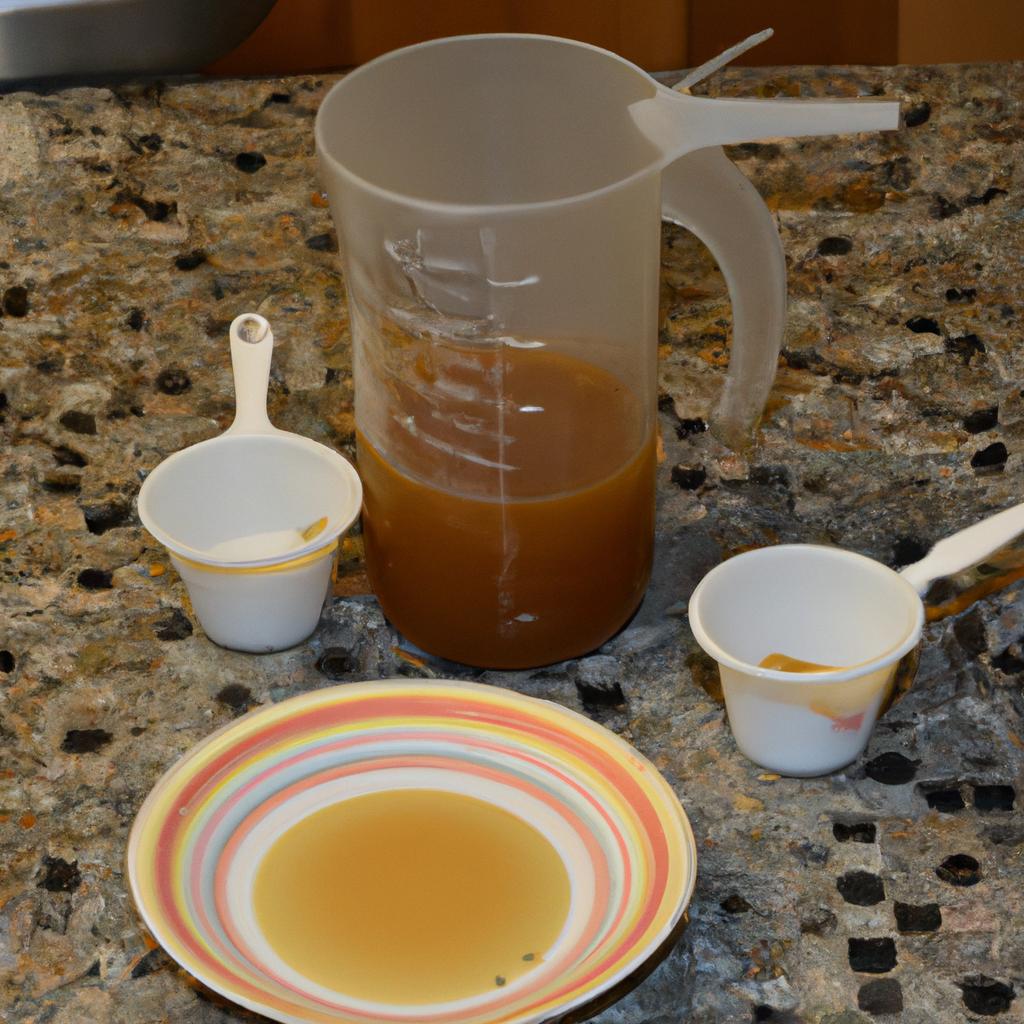If you’re a beekeeper or simply love honey, you might have come across the question of how many lbs of honey in a gallon. It’s a common query that many people ask, and the answer is pretty simple. In this article, we’ll cover everything you need to know about measuring honey and converting it from lbs to gallons or vice versa.
Understanding Honey and Its Measurement

Before we dive into the conversion process, let’s first understand what honey is and how it’s measured. Honey is a sweet, viscous liquid produced by bees from the nectar of flowers. It’s commonly sold in jars, bottles, or containers, and the weight or volume of honey can vary depending on several factors.
The most common measurement units for honey are pounds (lbs) and gallons. Pounds are used to measure the weight of honey, while gallons are used to measure its volume. One gallon of honey weighs approximately 12 lbs, but this can vary depending on the type of honey, its moisture content, and other factors.
When purchasing honey, it’s essential to know how it’s measured, as this can affect the quantity you’re getting and the price you’re paying. Some honey sellers may use different measurement units, such as ounces or kilograms, so it’s important to clarify the measurement unit to avoid confusion.
How to Convert Honey from lbs to Gallons

Converting honey from lbs to gallons is a simple process that involves dividing the weight of honey by its density. The density of honey varies depending on its moisture content and other factors, but it’s generally around 12 lbs per gallon.
To convert honey from lbs to gallons, use the following formula:
Gallons = Weight (lbs) / Density (lbs per gallon)
For example, if you have 24 lbs of honey, the conversion would be:
Gallons = 24 lbs / 12 lbs per gallon
Gallons = 2 gallons
Therefore, 24 lbs of honey is equivalent to 2 gallons of honey. It’s essential to note that this conversion is an approximation and may not be accurate for all types of honey.
How to Convert Honey from Gallons to lbs
Converting honey from gallons to lbs is the reverse process of converting from lbs to gallons. It involves multiplying the volume of honey in gallons by its density to get its weight in lbs.
To convert honey from gallons to lbs, use the following formula:
Weight (lbs) = Volume (gallons) x Density (lbs per gallon)
For example, if you have 3 gallons of honey, the conversion would be:
Weight (lbs) = 3 gallons x 12 lbs per gallon
Weight (lbs) = 36 lbs
Therefore, 3 gallons of honey is equivalent to 36 lbs of honey.
It’s important to note that the density of honey can vary depending on several factors, such as its moisture content, temperature, and type. Therefore, it’s essential to use the correct density value for accurate conversions.
Factors Affecting Honey Weight and Volume
Several factors can affect the weight and volume of honey, making it essential to measure honey accurately. One crucial factor is the moisture content of honey. Honey with a high moisture content will weigh more than honey with a lower moisture content. This is because water is denser than honey and adds weight to the final product.
Another factor that can affect honey weight and volume is temperature. Honey tends to expand when heated and contract when cooled, leading to variations in volume. Therefore, it’s essential to measure honey at room temperature to get accurate measurements.
The type of honey can also affect its weight and volume. Some types of honey, such as Manuka honey, have a higher density than others, leading to a higher weight for the same volume.
To ensure accurate measurements of honey, it’s essential to use a calibrated scale and measure honey at room temperature. You can also check the moisture content of honey using a refractometer, which measures the amount of light refracted by honey to determine its moisture content.
By understanding the factors affecting honey weight and volume and measuring honey accurately, you can get the right quantity of honey for your needs and avoid overpaying for honey.
Factors Affecting Honey Weight and Volume
Honey weight and volume can be affected by several factors, including its moisture content, temperature, and storage conditions. Honey with higher moisture content will weigh more than honey with lower moisture content. Similarly, honey stored at higher temperatures will have a lower viscosity and weigh less than honey stored at lower temperatures.
To ensure accurate measurement of honey, it’s essential to minimize the factors that can affect its weight and volume. Here are some tips on how to do that:
- Use a calibrated scale to measure the weight of honey accurately.
- Store honey in a cool, dry place to minimize moisture content and temperature fluctuations.
- Use a honey refractometer to measure the moisture content of honey before purchasing or selling it.
By following these tips, you can ensure that you’re getting the correct weight or volume of honey and avoid any discrepancies.
Conclusion
In conclusion, knowing how many lbs of honey in a gallon is essential for beekeepers, honey sellers, and honey enthusiasts. It’s crucial to understand the measurement units for honey and how to convert it from lbs to gallons or vice versa. Additionally, factors such as moisture content, temperature, and storage conditions can affect honey’s weight and volume, so it’s essential to take precautions to ensure accurate measurement.
At BeeKeepinglove.com, we’re passionate about honey and beekeeping, and we hope this article has provided you with valuable information on measuring honey. Whether you’re a seasoned beekeeper or a honey lover, knowing how to measure honey accurately is crucial for a successful beekeeping or honey-selling business.
